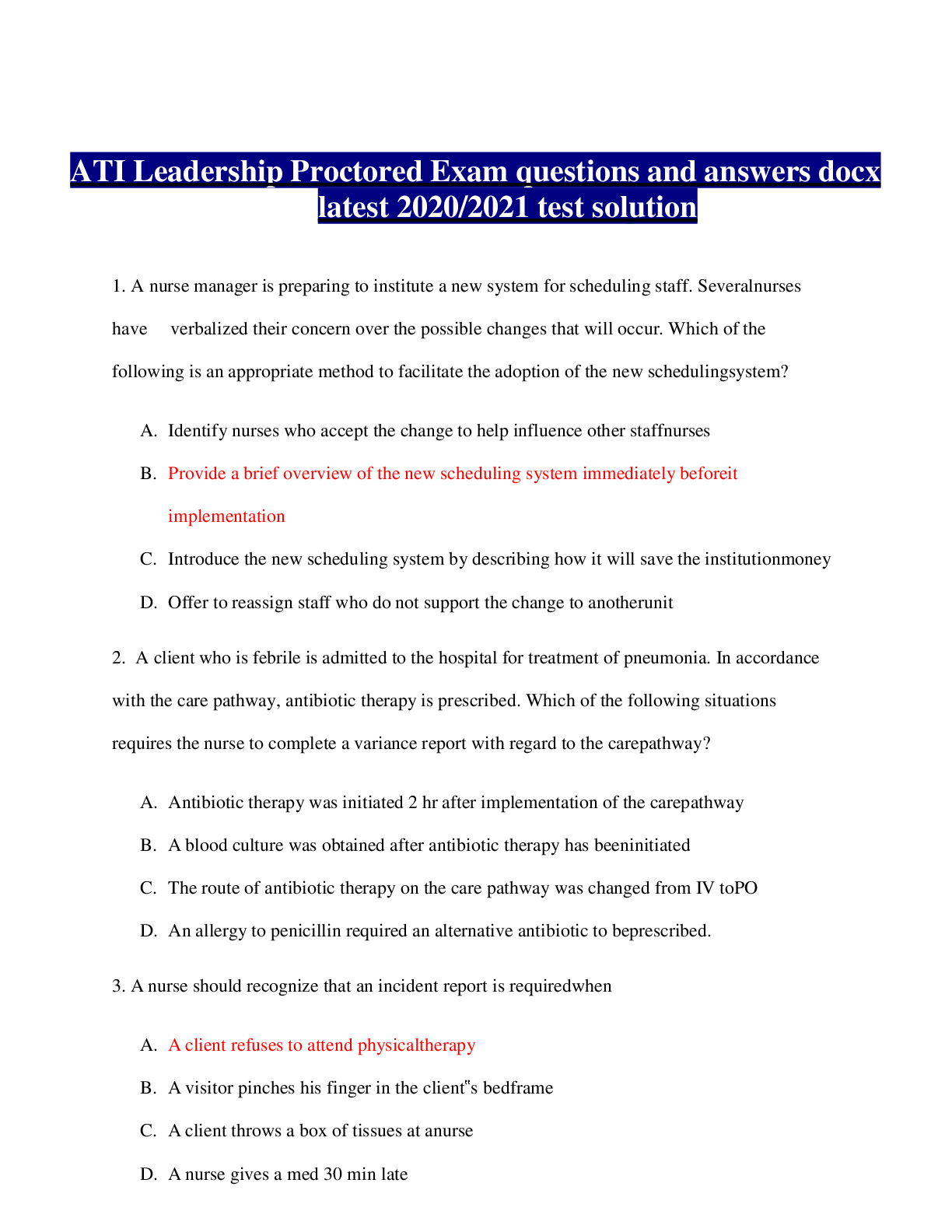*NURSING > QUESTIONS and ANSWERS > NURS Nursing 22_ATI Mental Health Practice Test B 2019 Remediation-REVIEWED AND EDITED BY EXPERTS (All)
NURS Nursing 22_ATI Mental Health Practice Test B 2019 Remediation-REVIEWED AND EDITED BY EXPERTS
Document Content and Description Below
ATI Mental Health Practice Test B 2019 Remediation Management of care Legal and Ethical issues: teaching about plan of care o Nurses do ongoing planning throughout the provision of care. While... obtaining new information and evaluating responses to care, they modify and individualize the initial plan of care o Discharge planning is a process of anticipation and planning for clients’ needs after discharge. To be effective, discharge planning must begin during admission o Throughout the planning process, nurses set priorities, determine client outcomes, and select specific nursing interventions Eating disorders: planning care for a client who has Bulimia Nervosa o Nursing care Perform self-assessment of regarding possible feelings of frustration regarding the client’s eating behaviors, the belief that the disorder is self-imposed, or the need to nurture rather than care for the client Provide a highly structured milieu in an acute care unit for the client requiring intensive therapy Develop and maintain a trusting nurse/client relationship through consistency and therapeutic communication Use a positive approach and support to promote client self-esteem and positive self-image Diverse Practice Settings: planning discharge teaching for a client who has Schizoaffective Disorder o ACT helps to reduce recurrences of hospitalizations and provides crisis intervention, assistance with independent living, and information regarding resources for necessary support services. o ACT teams work with clients in their homes, in agencies, hospitals, and clinics o This includes nontraditional case management and by an interprofessional team for clients who have severe mental illness and are noncompliant with traditional treatment Trauma and Stress related disorders: Priority action for a client who has PTSD o Safety/Risk reduction Look first for a safety risk. For example, is there a finding that suggest a risk for airway obstruction, hypoxia, bleeding, infection, or injury? Next ask, “What is the risk to the client?”, and “How significant is the risk compared to other posed risks?” Give priority to responding to whatever finding poses the greatest (or most imminent) risk to the client’s physical well-being o Flashbacks (dissociative reactions where the client feels the traumatic event is recurring in the present), such as a military veteran feeling that they are reliving a combat situation after hearing a harmless loud noise o Memories of the event recur involuntarily and are distressing to the client o Night-time dreams related to the traumatic even [Show More]
Last updated: 1 year ago
Preview 1 out of 5 pages
Instant download

Instant download
Reviews( 0 )
Document information
Connected school, study & course
About the document
Uploaded On
May 07, 2021
Number of pages
5
Written in
Additional information
This document has been written for:
Uploaded
May 07, 2021
Downloads
0
Views
57

.png)








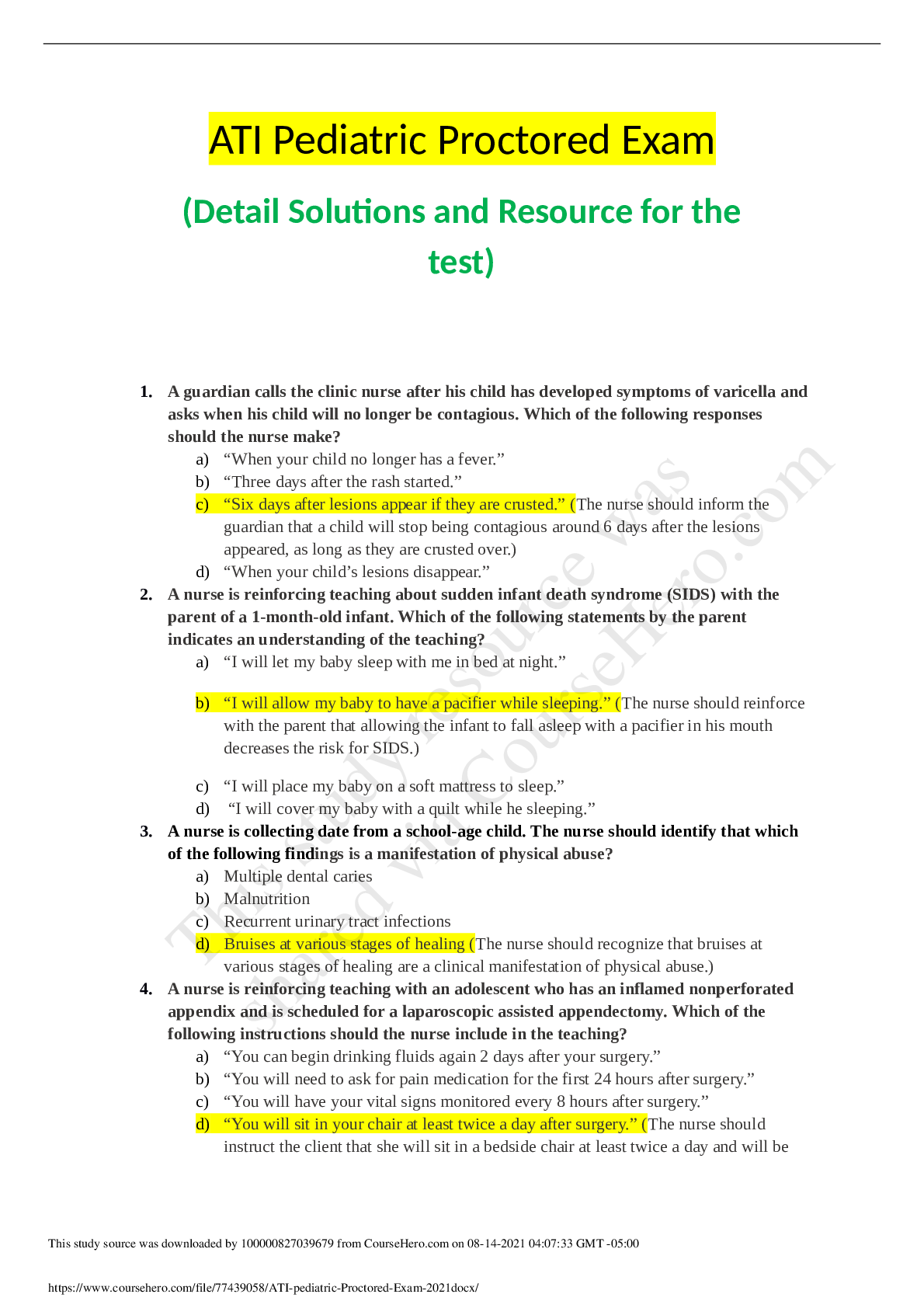




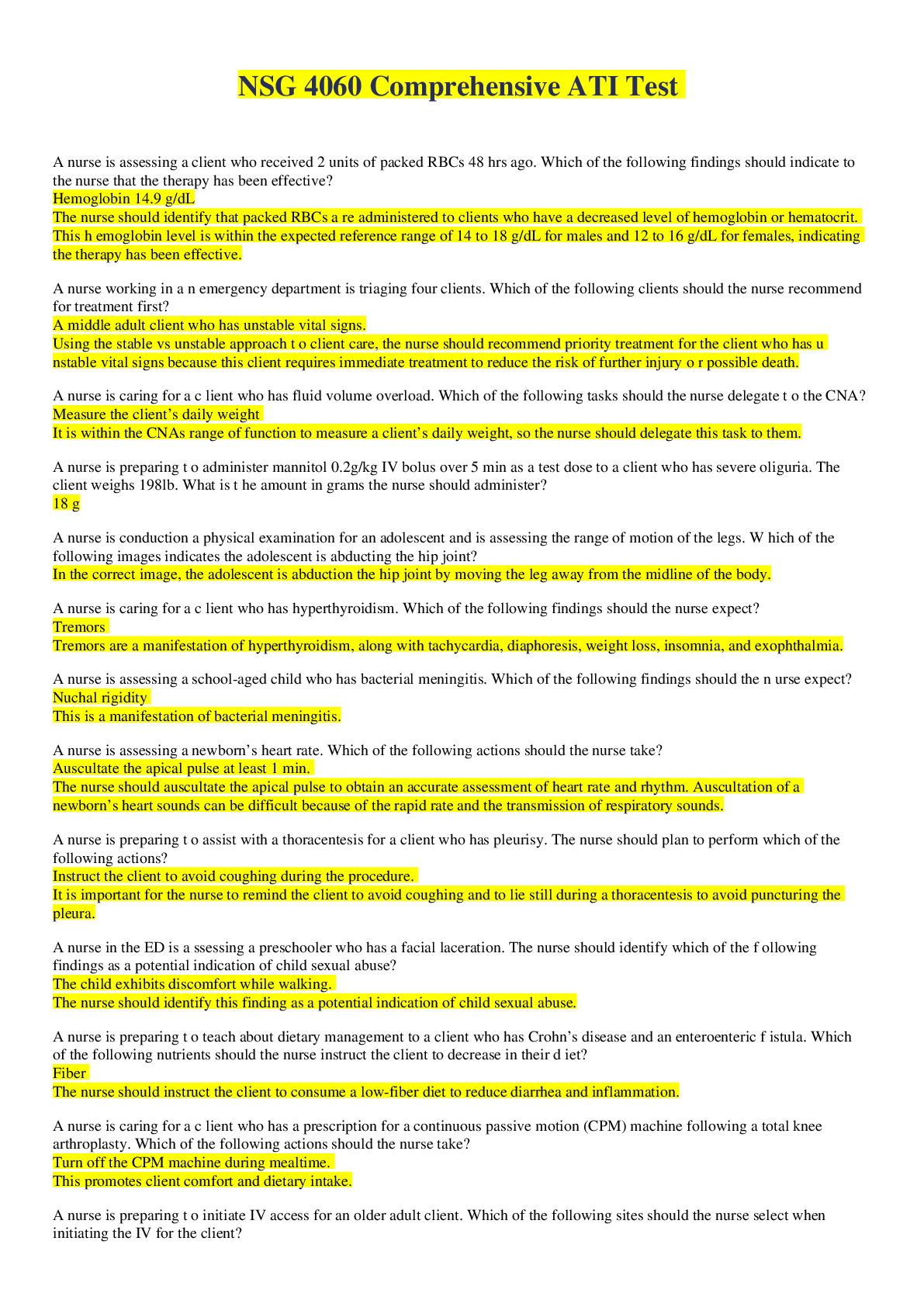
 A21.png)
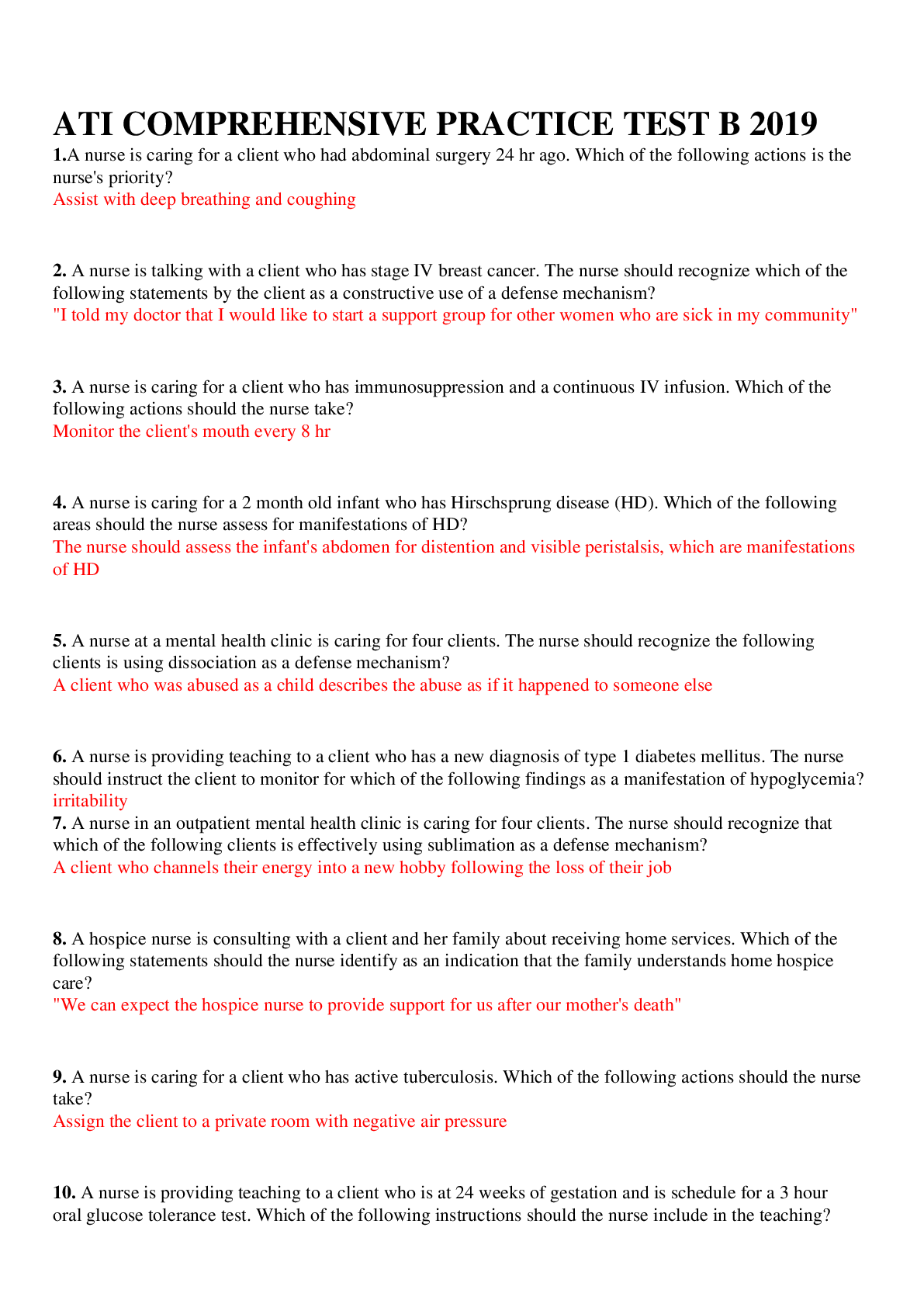
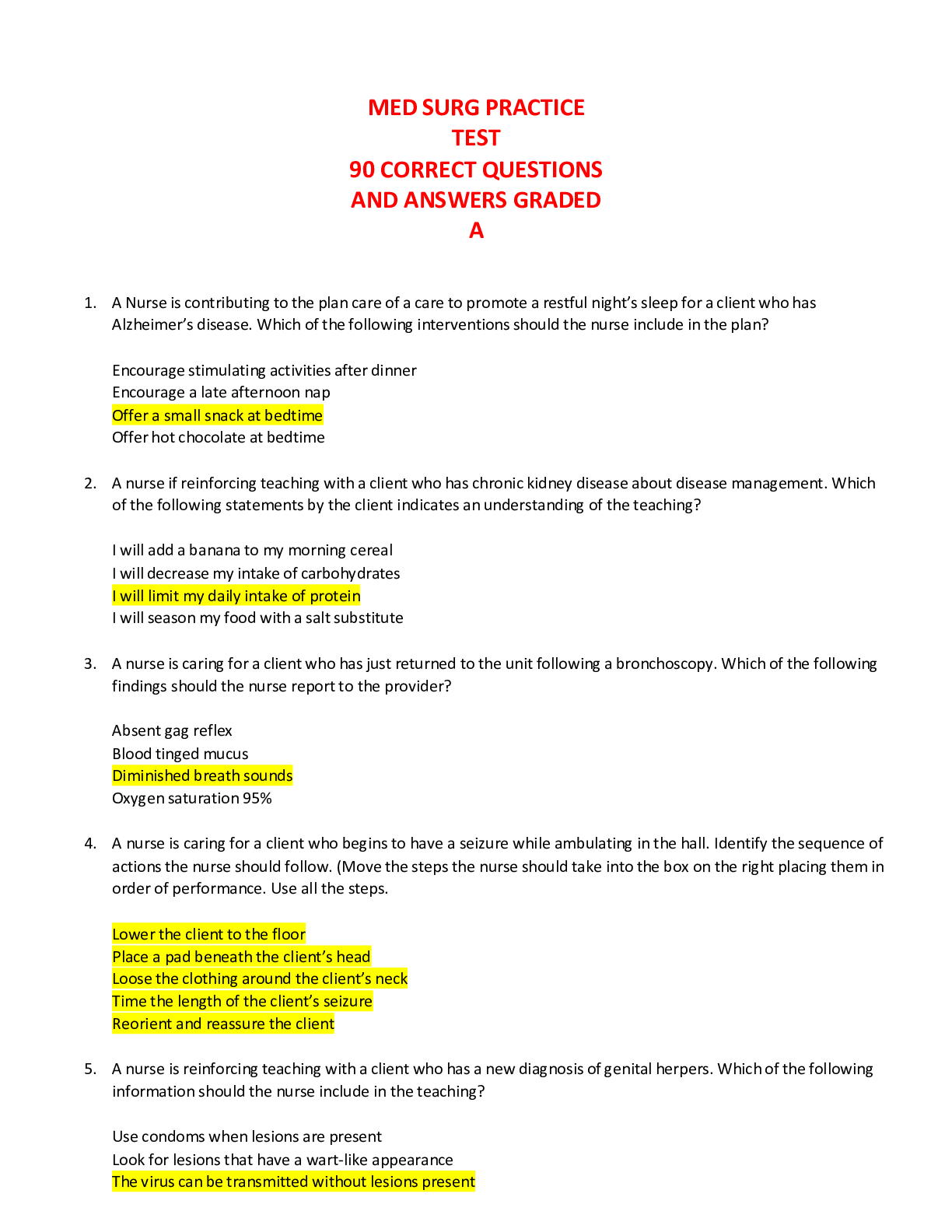
 – Chamberlain College of Nursing.png)
 – Chamberlain College of Nursing.png)

 MY21.png)


